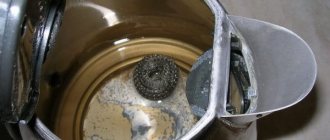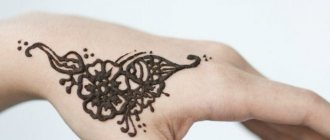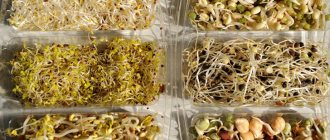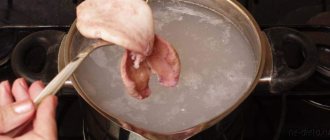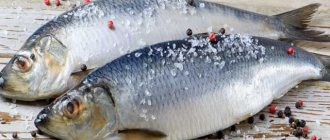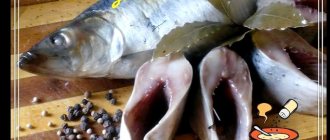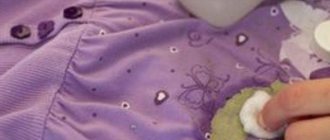Modern remedies for grayness and yellowness
Several types of bleaches are suitable for curtains:
- chlorine-containing;
- oxygen;
- optical.
Chlorine-based bleaches have been used for a long time. This group includes the common remedy Whiteness. Such substances act quickly, but give short-lived results. Chlorine quickly destroys the structure of the fabric, the threads become thinner, and yellowness quickly returns.
Oxygen bleaches (for example, Vanish) clean much more gently. They do not damage the structure of the material. You can easily use them more often than chlorine-containing analogues. However, substances such as stain removers are marketed. To properly bleach gray textiles, follow the instructions.
The procedure is carried out by hand washing; it is often necessary to soak the item in the prepared solution or apply the substance directly to the material. Among the disadvantages of oxygen bleaches is their short duration of action. After just a few washes, you will have to look again for methods to rid tulle of grayness.
Optical brighteners return whiteness to things or enhance the brightness of white fabrics due to their ability to absorb ultraviolet radiation in the range of 300-400 mm. The rays are converted into light with a blue tint, the wavelength is 400-500 mmk. The perception of once gray things changes due to compensation for the deficiency of blue rays. The technology is suitable for natural and synthetic materials.
Store-bought tulle products
In the hardware department of the store you can find many products for caring for curtains. When choosing, you should focus on the type of material and washing method. All information is indicated on the packaging; for delicate fabrics, you should not choose abrasive products that can damage the structure of the material. In order for white tulle to return to its original appearance, you must first wash it and then bleach it using one of the proposed options:
- oxygen bleaches;
- "Belizna" and other chlorine-containing products;
- optical brighteners with microparticles of luminescent dyes.
Return to contents
Washing with bleaching in a washing machine: quickly and efficiently
Ready-made bleaches for removing yellowness from tulle:
- Dr. Beckmann (bags with contents are placed in the drum of the machine);
- Bingo tulle powder;
- sachets of Heitmann powder (add to the detergent compartment);
- “Super white tulle” tablets (Frau Schmidt);
The effect of special products is enhanced by baking powder (prepare 1 packet) and 1 tbsp. l. soda or salt. This mixture is added to the powder compartment. You can use the “Soak” mode. Recommended parameters: water temperature no more than +30°C, spin speed up to 500 rpm. You can use bleach after machine washing. The operating mode parameters are the same.
To bleach tulle in an automatic washing machine, use hydrogen peroxide tablets (10 pcs.). They must be placed in the washing powder compartment. To bleach tulle with peroxide, select a delicate mode of 30°, without spinning. If you set a higher temperature, you can get an unexpected effect at the end of the wash - the fabric will only turn yellower.
Additional recommendations
- Be sure to wash your tulle before bleaching. Many housewives make the mistake of bleaching dirty fabric. As a result, dust penetrates deeper into the fabric and aggravates the situation;
- Remove greasy stains from fabric before bleaching. Dilute 50 ml of vinegar in 1 liter of water, add 3-5 drops of dishwashing detergent, soak, wash the tulle and start bleaching;
- control the temperature. For delicate fabrics it is +30…+35 ℃. When washing tulle in a washing machine, set the speed to no more than 400 rpm.
- To make the curtains shimmer in the sun, add 1 tbsp when washing. l. vinegar. This amount will not leave an unpleasant odor, but will add shine;
- do not squeeze the tulle, especially using twisting. Just let the water drain;
- no need to iron the tulle. When drying, the fabric will smooth out under its own weight.
Please note that different bleaching methods are suitable for each type of fabric.
| Type of fabric | Whitening methods |
| Veil | Ammonia, starch, salt |
| Organza | Zelenka, salt, starch, ammonia |
| Capron | Zelenka, potassium permanganate, soda, starch, salt, citric acid |
| Jacquard | Laundry soap, soda |
| Chiffon | Laundry soap, salt |
| Cotton, linen | Boiling, bluing and all other methods |
Green paint helps against yellowness, blue paint helps against grayness, and ammonia, vinegar and hydrogen peroxide get rid of greasy stains on tulle.
Using these methods, you can return the fabric to its freshness and sparkling whiteness. What methods of bleaching tulle do you use? Share your experience with us in the comments.
Home Remedies
You can bleach tulle using brilliant green and salt, ammonia, vinegar essence, soda, hydrogen peroxide and other substances. Most of them are always at hand, which simplifies the task. In this case, pay attention to the composition of the material. When choosing how to bleach yellow tulle, keep in mind that an aggressive substance can ruin the fabric.
Saline solution
Salt is the least aggressive and accessible remedy. Even allergy sufferers can use a saline solution. The disadvantages include the long whitening period. To prepare the solution you will need 1/2 cup of washing powder, 3 tbsp. l. coarse salt (use non-iodized salt), 10 liters of liquid. The components must be combined and mixed thoroughly.
Tulle is immersed in the prepared solution. The minimum whitening time is 3 hours. You can leave the material in the solution overnight. Washing is done by hand, or you can use an automatic machine. It is important to rinse the textiles thoroughly, as salt particles may remain in the structure of the material, which will make it tougher.
Soda and vinegar
A mixture of baking soda and vinegar will help remove yellow discoloration. Instructions:
- Prepare the mixture: 50 g of washing powder, 1 tbsp. l. soda
- You will need 5 liters of water.
- The curtains are lowered into the prepared solution.
- After 20 minutes, the tulle can be rinsed.
To enhance the effect, use vinegar. It is added when rinsing: 1 tbsp. l. essences, 1 liter of water. This way the fabric is given shine.
Hydrogen peroxide and ammonia
If you need to quickly refresh gray tulle, take 1 tbsp. l. ammonia, 1 tbsp. l. hydrogen peroxide. The components are poured into hot water (temperature above +50°C). There should be enough liquid to soak the curtains. After 30 minutes, the tulle should be rinsed, but not wrung out.
A method characterized by longer bleaching is also used. Take 1 bottle of ammonia and an arbitrary amount of water (it should cover the product). The tulle is left in this product overnight and rinsed in the morning. You can add 20 ml of ammonia to the automatic machine. Select a delicate wash cycle.
White
You can quickly remove yellowness by applying a concentrated product to the material. To prevent Whiteness from destroying the structure of the tulle, the composition of the fabric is therefore taken into account. A more gentle method is to make an aqueous solution based on a chlorine-containing product.
The components are taken in arbitrary quantities: the more Whiteness, the more actively the textiles are lightened, but such a solution is more aggressive. Soak the tulle in a less concentrated product for 30-50 minutes until the result is visible. The disadvantage of this method is the intense unpleasant odor, which is difficult to remove.
Potassium permanganate solution
Potassium permanganate is used in combination with laundry soap. The block must be chopped on a coarse grater. To prepare the product, you need to take 100 g of shavings. This component is combined with water (take an arbitrary amount sufficient to fill the container). It is important to completely dissolve the soap; it is advisable to achieve foam by stirring the shavings.
A solution of potassium permanganate is prepared separately. You need to add several fractions of potassium permanganate to 1 glass of water. You need to get a pale pink product. The liquids are combined and mixed. Curtains are soaked in the finished product. After 30 minutes, you can rinse the tulle.
Zelenka, blue
You will need no more than 10 drops of the product. It is added to water (200 ml). You can enhance the result. For this purpose, use 1 tbsp. l. salt. The solution must be stirred until the sediment disappears, then poured into a basin filled with water. The tulle is soaked, and after 5 minutes the product can be removed. There is no need to wring it out. With the help of brilliant green, the tulle will be like new.
Blue also promotes bleaching. It is necessary to dissolve 1 cap of this product in 10 liters of water. The liquid should have a uniform color to avoid streaks. You need to prepare a container of water. Alternately rinse the tulle in a basin with a blue solution, and then in a container with clean water 3-4 times.
Aspirin
This remedy helps get rid of yellowness and gray color. Prepare 4 tablets, 5 liters of warm water. The aspirin should completely dissolve. The product is soaked in the finished product. After 3 hours you can rinse it. After washing, hang the tulle without wrung out. The use of effervescent aspirin will lead to more yellowing of the tissue, since such a product contains components that may behave differently.
Boric acid
Prepare a soap solution according to the recipe: 100-150 crushed soap shavings per 8-10 liters of water. Add a handful of baking soda and 1 packet of boric acid to this product. The tulle is soaked for 1 day. From time to time, textiles need to be turned over in containers so that the bleaching process occurs evenly. Then all that remains is to wash the material manually or in an automatic machine, and choose the delicate mode.
Lemon acid
First, rub the product with laundry soap. Then the tulle is soaked in hot water (not higher than +40°C). If contaminants cannot be removed, additionally use a product based on hydrogen peroxide (1 tbsp., 2.5 l of water). Soak the product in this solution for at least 30 minutes. Then they move on to rinsing. You need to add 1 packet of citric acid to the water.
How do you bleach your curtains?
Secrets of whitening nylon tulle
You can often see that synthetic fabric is mixed with natural fabric (cotton) and it is perfectly bleached by hydrogen peroxide, which is a component in many detergents and bleaches, such as Vanish.
Therefore, nylon, being a synthetic fabric, will acquire a boiling whiteness in solutions using hydrogen peroxide.
Whitening tulle with hydrogen peroxide
So, in warm water, dilute 1 tablespoon of peroxide per half liter of liquid. Soak for two or three hours. And rinse well in several waters.
Methods for bleaching tulle from different types of fabrics
Various means are used, taking into account the composition of the material. Individual methods are often used for synthetic and natural fabrics. This is due to the structure of the material.
Organza
The fabric is characterized by moderate rigidity. This is a transparent material, it is made from various raw materials: polyester, silk, viscose. The main difference is the technique of weaving the threads. Organza is washed at a temperature not higher than +40°C. A higher temperature will cause a change in structure. To whiten organza tulle that has turned yellow or darkened from soot and soot, you can consider the following remedies:
- blue;
- brilliant green;
- salt;
- hydrogen peroxide;
- ammonia.
Not all folk remedies bleach such material; some of them act aggressively and therefore cannot be used. Organza cannot be twisted. For the same reason, use a delicate wash program, without spinning.
How to bleach nylon tulle?
Recommendations for caring for nylon are the same as for the option discussed above: do not use hot water and aggressive agents, it is better to avoid squeezing. The optimal temperature regime is up to +30°C. The material can be washed by hand. If the automatic machine’s functions do not include a “delicate spin” mode, it is permissible to set the speed to 400 rpm.
To whiten white nylon tulle, you can take home remedies to get rid of yellowness:
- Saline solution: 10 liters of water, 1 cup of salt. You need to soak the material.
- A product based on blue or brilliant green: prepare a weak solution.
- You can bleach dirty tulle using potassium permanganate: take a small amount of fractions and 3 liters of water, it is important to get a slightly pink substance. To this product you need to add laundry soap, which is pre-crushed (1/2 briquette), the mixture needs to be shaken by hand until foam forms. The nylon is left for 30 minutes.
After soaking the nylon, you can proceed to the second stage - washing in an automatic machine or manually.
Tulle veil
If you are looking for ways to bleach such material, you should consider recipes based on soap, salt, starch, soda, blue, and brilliant green. Tulle is a mesh with patterned weaving. In production, polyester is used, much less often - silk threads. Such material is easy to damage, so it is better to do without squeezing. Recommended temperature within +30…+40°С.
Chiffon curtains
They are characterized by low strength, so you cannot use the spin washing mode. You can bleach chiffon with laundry soap and salt. Washing is done in cool water. To prevent grains from damaging the material, the salt must be fine-grained.
Linen tulle
It is acceptable to use ready-made bleaches. However, it is recommended to use them as rarely as possible. This is due to the aggressive action of such agents. You can refresh linen curtains with a solution based on ammonia. This is a suitable product for natural materials.
Batiste
Tulle is a type of cotton fabric that is resistant to high temperatures. This type of tulle can be washed and bleached by boiling it with laundry soap, as well as a solution based on starch, ammonia and hydrogen peroxide.
Kiseya
Kisey is a cotton material (made from cotton, but it is distinguished by a non-standard weaving technique), you can use the same bleaching methods as for cambric (ammonia-based solution). When washing, only powder is used, without additives. The bleach is used separately, before or after removing stains from the fabric.
Mesh (tulle)
Tulle is moderately durable and is made from synthetic fiber (polyester thread). Tulle can withstand the effects of more aggressive agents, but they should not be abused for the same reasons: the fabric quickly loses strength. A good solution for the mesh would be a saline solution in combination with washing powder. It is necessary to soak the product for a while until improvements are visible. Then you can simply rinse it.
Features of bleaching depending on the type of material
Tulle is a thin and delicate fabric that requires special care. The first thing you should pay attention to when choosing a method is the type of material. The purchased products contain a list of fabrics for which they are used. Traditional recipes have a more delicate effect, and they are safe for most materials. Experienced housewives give recommendations regarding the main types of tulle:
- For organza, bleaching with salt, blue and brilliant green is suitable, but it is strictly forbidden to use hot water.
- Nylon tulle is less demanding; it can be machine washed and soaked in starch, soap solution and potassium permanganate.
- It is better to wash chiffon by hand and bleach it with soap.
- You can restore the whiteness of cotton products by using household chemical products. They can be boiled.
It is better to use the products recommended by the manufacturers. If you are not sure of the quality of the tulle, it is better not to use high temperatures and abrasive detergents. In this case, the yellowness is fixed in the fibers of the fabric and it will become impossible to get rid of it. In order for the tulle to remain white for a long time, it should not be washed often. It is not recommended to wash silk and other expensive fabrics yourself.
How to carefully bleach old tulle from gray stains and yellowness?
In old curtains, dirt managed to penetrate deep into the structure of the threads and became ingrained under the influence of high temperatures (for example, curtains in the kitchen). Removing them will not be easy. It is also difficult to bleach old yellowed tulle due to significant damage to the fibers. The fabric can tear at any time during intensive washing. Instructions for removing yellowness:
- First, the curtains are washed by hand or in an automatic machine. Choose a delicate mode, without spinning.
- If the fabric can withstand high temperatures, you can improve the result by using the boiling method with laundry soap.
- The tulle is soaked in a solution based on ammonia and hydrogen peroxide.
- You can bleach sun-bleached kitchen tulle with salt. There is no need to soak the product.
- The material is rinsed in a starch-based solution.
How to bleach tulle with salt and soda
Table salt is often used to bleach curtains; it also adds rigidity and shine to the curtain. When you have already soaked and washed the tulle a couple of times, we make a solution: 4 tablespoons of salt with washing powder per four liters of warm water. Let it soak for a couple of hours.
Whitening tulle with salt
Advantages and disadvantages:
- Availability,
- Economy,
- Environmental friendliness,
- Completely safe for delicate fabrics
- Does not spoil the structure of the fabric,
- Salt may not remove the stuck yellowness if the curtain has been hanging for a year (situations vary).
But salt will do an excellent job of maintaining whiteness when washing three or four times a year.
Soda
Baking soda is a multifunctional product and is used not only in bleaching curtains and clothes, but also in cleaning silver and gold items. Pour water into a bucket, maybe a little hotter (not boiling water!) and pour out half a pack of soda. Soak the tulle in it and leave it for a long time. If the curtains have a strong yellow tint, you can leave it on for a day.
Whitening tulle with soda
Advantages of the method:
- Soda softens the water and prevents soap flakes from settling on the fabric.
- Affordable price.
- The scale of distribution.
- Environmental friendliness of materials.
- No side effects.
- Completely safe for fabrics.
How to bleach nylon and organza with brilliant green
Diamond green will remove the most capricious fabrics. First of all, this concerns organza. Before bleaching tulle with green, the curtain must be pre-washed. The first step is to shake out the dust, then soak it in soapy water for 5-8 hours. Next is hand washing using soap, gel or liquid SMS.
At the end, the tulle is rinsed in a weak solution of green paint. Dilute 15 drops of brilliant green in a glass of water and leave the solution for 5-7 minutes. After this, the liquid is stirred and left for another 5-7 minutes. After this, pour it into a container with clean water until a barely noticeable green tint of the water is obtained.
You need to immerse the textiles in it for 10 minutes with periodic turning. After rinsing, the curtain is hung out to dry. To enhance the effect after greening, the tulle is soaked for 2-3 hours in NaCl solution (5 tablespoons of salt per liter of water).
At any stage of processing, water with a temperature above 40 degrees Celsius cannot be used. If you overdo it with greenery, the tulle will acquire a soft turquoise or greenish tint.
Whitening Recommendations
Despite the apparent ease of the whitening process, certain rules must be followed:
- For soaking, use only plastic or enamel containers.
- Monitor the temperature of the water so as not to ruin the fabric.
- When boiling, be careful - use a strong long wooden stick or special wooden tongs for stirring; do not remove the hot pan from the stove; do not remove the curtains immediately after turning off the fire, let them cool.
- Carry out all work with acid, vinegar and hydrogen peroxide only with gloves.
- Peroxide is not compatible with chlorinated water, so use only clean water.
- Do not wring or twist the tulle with your hands, let it dry by straightening it and hanging it on a clothesline.
- Follow the proportions indicated in the recipes.
An effective way to whiten organza tulle at home
Organza, with its unpretentiousness, has won the love of housewives all over the world, but sometimes it requires more careful care, because... If not properly cared for, it easily turns gray. Organza is easily washed both by hand and by machine.
Whitening organza
Saline solution
Before washing, the curtain can be soaked in a saline solution. For about four liters you need to put 1-2 spoons. Let the curtain lie in it for two hours.
Salt absorbs dirt and fumes.
After soaking, you can wash it in a soapy solution and hang it up to drain, because... Organza cannot be damaged by twisting.
Organza bleaches well with oxygen bleach. He treats these types of matters more sparingly.
Due to the fact that organza is transparent and without patterns, it wonderfully transmits light and looks very modern. If it is snow-white, it also sparkles wonderfully in the sunlight.
Starch
You can bleach organza tulle in a starch solution. To do this, add a couple of tablespoons of starch to lukewarm water, hold a couple of aces and leave to drain. You can also use store-bought products for bleaching, but it is better to give preference to those marked “for curtains and tulle” and not spoil the curtain.
Starch helps the fabric fibers maintain the shape of the curtain.
Washing tulle
Despite proper care, the curtain becomes stale over time and loses its natural whiteness. Yellowed tulle is typical both for the kitchen, where it absorbs steam from cooking, and for the entire apartment. Moreover, this is a problem not only in houses where people smoke indoors. Although there the curtains suffer even more. Therefore, the following tips on how to wash white tulle so that it becomes snow-white can be useful to any housewife.
Expert opinion
Natalya Osadchaya
Before washing, shake out the curtains well to get rid of excess dust. Thorough washing and bleaching takes time. Therefore, always choose a long wash cycle with pre-soak.
Tips on how to wash tulle so that it is snow-white:
- These curtains are primarily made from 100% polyester, making them relatively easy to wash.
- The ideal option for washing soiled curtains is by hand; Hand washing is much less likely to cause damage.
- When washing in an automatic washing machine, select the delicate cycle; Wash at 30°C.
- It is good to use a washing bag that protects the product from damage from the drum.
- Place folded curtains in the mesh.
- To get rid of yellowness at home, there are special detergents that have a whitening effect due to the content of active ingredients against grayness.
- It is not recommended to twist the tulle too much or press it in the machine for a long time at high speed. A short push-up at low speed (300-400) is enough.
- Washed curtains should be removed from the machine immediately after washing to avoid wrinkles.
- As a rule, tulle does not require ironing. They can be ironed by hanging them on windows.
- Wash organza in the same way as classic curtains.
- Smooth veils and organza are ironed while still slightly damp, with a barely heated iron. But they can also be smoothed directly onto the windows.
- It is not recommended to dry curtains in the dryer.
- It is not advisable to use fabric softener when washing - they can affect the structure of the fiber.
Automatic wash
Since tulle is primarily made from 100% polyester, it is easy to wash it white at home. Although they look light and fragile, there is no need to worry. This material is more durable and flexible than it seems. Curtains can be washed in an automatic washing machine. But before washing, be sure to read and follow the directions on the label.
Important! It is recommended to pre-soak very dirty or old tulle in a soapy solution. The same rule applies to removing stubborn stains (typical for the kitchen).
The most suitable temperature for machine washing is 30°C. Wash curtains briefly and carefully, without adding other laundry to them. Long spins at high speed are not recommended. To avoid ironing and ironing the tulle, hang it up immediately after washing. Most materials do not wrinkle.
Handwash
Some materials require gentle hand washing. In this case, rinse the curtains in a bath of cold water, then soak in a solution of soap or mild detergent (bath temperature should be around 30°C). Wash by light rinsing, squeezing, spinning. Avoid intense friction and twisting. Rinse the detergent thoroughly, replacing the water 2-3 times. Gently squeeze out excess water and leave the curtains to drain without twisting them.
